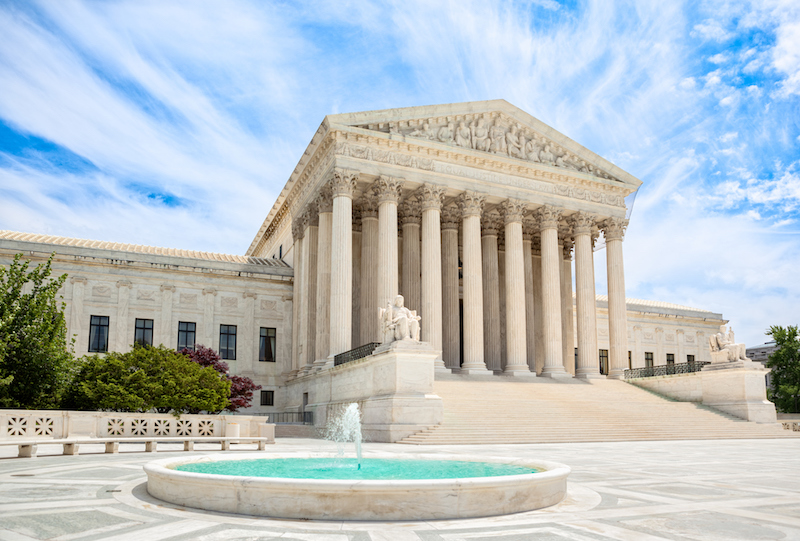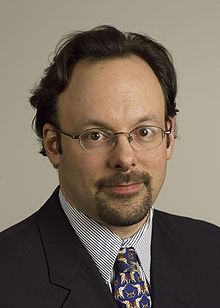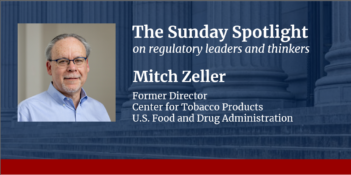
The Supreme Court’s most recent term suggests that some justices would revise the doctrine of Chevron deference.
Long a fixture of administrative law, Chevron v. Natural Resources Defense Council is suddenly under siege.
Members of Congress, academic commentators, and even a few federal judges have suggested that Chevron should be reconsidered—if not consigned to the ash heap of discarded doctrines. As for the U.S. Supreme Court justices, Justice Clarence Thomas, for his part, has questioned Chevron’s constitutionality. Chief Justice John Roberts has suggested that, insofar as Chevron is retained, it needs to be tamed.
The Supreme Court’s newest member, Justice Neil Gorsuch, is among Chevron’s most prominent critics. As a circuit court judge, he wrote that, to the extent that Chevron requires judges to defer to agency interpretations, it “seems no less than a judge-made doctrine for the abdication of the judicial duty.” Then-Judge Gorsuch warned that allowing agencies to offer authoritative statutory interpretations threatens to transfer “the job of saying what the law is from the judiciary to the executive,” inviting “the very sort of due process (fair notice) and equal protection concerns the framers knew would arise if the political branches intruded on judicial functions.”
The Supreme Court’s 2017-2018 term was Justice Gorsuch’s first full term on the Court. Did his Chevron skepticism have any effect on the Court? Perhaps.
Chevron deference was raised in defense of agency interpretations of statutory language in five cases this past term, and in all five cases a majority of the Court rejected the agency’s plea. In a sixth case, Encino Motorcars v. Navarro, the Court rejected the statutory interpretation advanced by the agency, having previously determined that the agency’s interpretation was not eligible for Chevron deference. Justice Gorsuch was in the majority in each one of these cases and wrote for the Court in two of them.
In Digital Realty Trust v. Somers, a unanimous Court agreed that the definition of “whistleblower” in the Dodd-Frank Wall Street Reform and Consumer Protection Act was “clear and conclusive.” Although some of the justices disputed whether it was necessary or appropriate to consider legislative history in reaching this conclusion, they all agreed that the U.S. Securities and Exchange Commission was not entitled to any deference for its interpretation of “whistleblower.”
In Wisconsin Central Limited v. United States, the Court split 5-4 over whether employee stock options are taxable “compensation” under the Railroad Retirement Tax Act. Justice Gorsuch, writing for the majority, seemed intent on resisting any finding of statutory ambiguity and settling upon the best available meaning of the relevant text.
Justice Stephen Breyer—writing for the dissenters—disagreed, maintaining that strong arguments for a broader interpretation of what constitutes “money remuneration” that counts as taxable compensation existed. “At most, this conflicting statutory language leaves the meaning of ‘money remuneration’ unclear,” wrote Justice Breyer, suggesting room for Chevron deference.
But the Wisconsin Central majority would have none of it: “In light of the textual and structural clues before us, we think it’s clear enough that the term ‘money’ excludes ‘stock,’ leaving no ambiguity for the agency to fill,” Gorsuch explained.
Justices Gorsuch and Breyer sparred again over what makes a statute sufficiently ambiguous to justify deference in SAS Institute v. Iancu, which the Court also decided 5-4.
Although Justice Breyer, dissenting again, found gaps in the relevant statutory language, Justice Gorsuch, again writing for the majority, disagreed, finding “no uncertainty” in the statute “that could warrant deference.”
But even the dissenting justices in SAS Institute were split on the question of how to apply Chevron. Justice Elena Kagan joined all of Justice Breyer’s dissent, save for one passage suggesting that courts should not treat Chevron as an inexorable command, but rather as “a rule of thumb, guiding courts in an effort to respect that leeway which Congress intended the agencies to have.”
Although Justice Kagan saw no need to explain her differences with Justice Breyer in SAS Institute, Justice Samuel Alito wrote a forceful dissent to the majority’s application of Chevron in Pereira v. Sessions.
In Pereira, eight justices interpreted the meaning of a “notice to appear” for removal proceedings under the Illegal Immigration Reform and Immigrant Responsibility Act of 1996, concluding that if an alleged notice does not include the time or place of the proceedings, it does not have the same implications as a “notice to appear” under the statute. This outcome, Justice Sonia Sotomayor wrote for the Court, was dictated by “plain text, the statutory context, and common sense.” As she explained, “the Court need not resort to Chevron deference…for Congress has supplied a clear and unambiguous answer to the interpretive question at hand.”
Justice Alito not only disagreed with the majority’s analysis, he wrote at length to protest the majority’s apparent abandonment of Chevron. Alito wrote that “a straightforward application of Chevron requires us to accept the Government’s construction of the provision at issue.” He argued “that the Court, for whatever reason, is simply ignoring Chevron.” Given that most contemporary criticisms of Chevron appear to come from the political right, Justice Alito’s decision to rush to Chevron’s defense is notable—if also somewhat unexpected given his willingness to join prior decisions critical of Chevron, including Chief Justice Roberts’s dissent in City of Arlington.
The most significant discussion of Chevron this term may have come in Justice Gorsuch’s opinion for a five-justice majority in Epic Systems Corp. v. Lewis.
In rejecting the National Labor Relations Board’s (NLRB) claim that the National Labor Relations Act provides an exception to the general rule providing for the enforceability of arbitration clauses under the Federal Arbitration Act, Justice Gorsuch explained why the NLRB’s interpretation of the Federal Arbitration Act was not eligible for Chevron deference, regardless of whether the relevant language could be considered ambiguous.
Chevron deference, Justice Gorsuch explained, is premised upon a delegation of interpretive and policymaking authority by Congress to the agency. The NLRB may be entitled to deference in interpreting a statute it administers, such as the National Labor Relations Act. Yet “on no account” could the NLRB claim any “authority to address the meaning of a second statute it does not administer,” like the Federal Arbitration Act. Justice Gorsuch explained that, under Chevron, the task of reconciling potentially conflicting statutory regimes “‘is a matter for the courts,’ not agencies.” Furthermore, he concluded that whenever the executive branch “seems of two minds”—as it was in Epic Systems, because the Solicitor General and NLRB urged different results—any argument for deference based on political accountability should be inapplicable. With this analysis, Justice Gorsuch made clear that Chevron deference should be constrained, and is only applicable within the proper domain.
This term was not only Justice Gorsuch’s first term on the Court; it was also Justice Anthony Kennedy’s last. Concurring in Pereira, Justice Kennedy took the opportunity to share his own “concern with the way” Chevron “has come to be understood and applied” in federal courts.
In his concurrence—perhaps in response to Justice Alito—Justice Kennedy lamented the “reflexive deference” that courts have sometimes shown to agency statutory interpretations. He also found “more troubling still” the application of deference “to other questions of statutory interpretation, such as an agency’s interpretation of the statutory provisions that concern the scope of its own authority.”
Concern about Chevron was not entirely new for Justice Kennedy. Not only did he join Chief Justice Roberts’s City of Arlington dissent in 2013, he had also adopted a narrow view of Chevron in Gonzales v. Oregon in 2006. Yet Justice Kennedy’s separate opinion in Pereira was his most explicit expression of disquiet with Chevron deference. Read in light of his departure from the Court, Kennedy’s concurrence seemed to endorse the questions—if not also the answers—about Chevron that Justice Gorsuch raised in Epic Systems.
Overall, nothing in the past term casts express doubt on Chevron’s vitality. The relevant opinions all proceeded on the assumption that Chevron remains good law, and there were few suggestions to the contrary.
At the same time, these decisions suggest that most of the justices, most of the time, are not particularly interested in how agencies interpret federal statutes. Statutory interpretation, after all, is something judges do quite often, so the justices may be excused if they do not think the agencies do it quite as well. If there is a message to lower courts in these decisions, it is that courts should not be too quick to think they must defer to federal agencies. The gaps for Chevron deference to fill, in this view, may be few and far between. Time will tell whether this pattern holds.
This essay is part of a series, entitled The Supreme Court’s 2017–2018 Regulatory Term.




